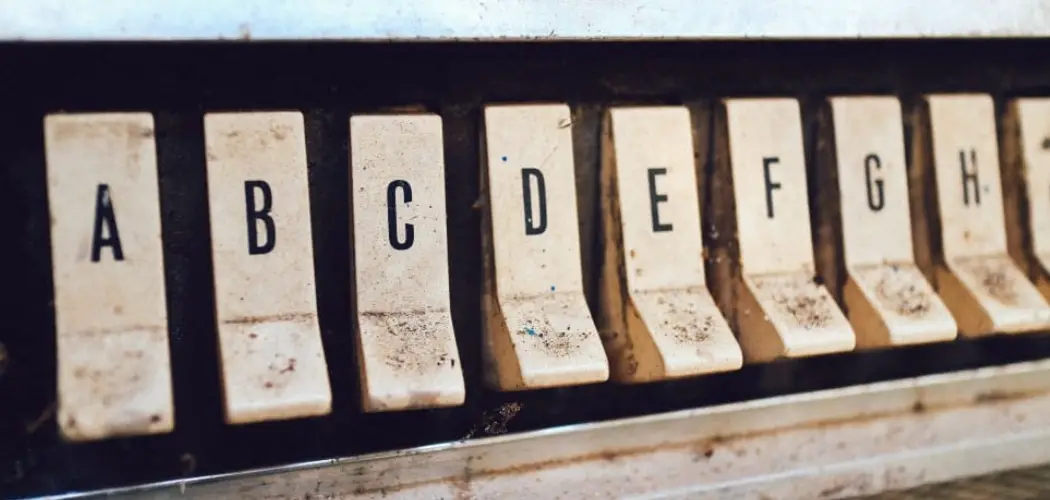Do you want to make stunning wooden signs or carve impressive patterns into your next woodworking project? If so, then understanding how to router letters in wood is essential. Routered lettering offers a unique and professional look that will set any project apart.

Whether you’re looking for a way to personalize a gift for someone special or add flair to an everyday object, learning how to router letters can help you create incredible results with minimal effort.
In this blog post, we’ll cover the basics of how to router letters in wood and show you everything from how to choose the right font style and size to correctly spacing out your chosen words. From beginner-friendly tips and tricks all the way up through more advanced concepts, you’ll get all of the information necessary for creating beautiful routed letters like a pro!
Can You Use a Router to Write in Wood?
Yes, you can use a router to write in wood. With the right router bit, creative cutting techniques, and practice, you can create professional-looking signs or decorative pieces that are sure to impress.
To begin routing letters on wood, it’s important to select the correct router bit for the job. For smooth lettering on wood, you will want to use an end mill router bit. This type of router bit has flutes that cut the wood like a drill does and are most commonly used for engraving or writing on wood. When choosing an end mill router bit, be sure to select one with a diameter size that is appropriate for the desired lettering size.
Once you have the correct router bit installed in your router, the next step is to draw or print out the desired lettering. Place the paper on top of the wood and use a pen or pencil to trace around each letter. This will leave an indentation that can be used as a routing guide.
When starting to route out the lettering, it is best to set the router bit depth to 1/4 inch and make multiple passes when routing through the wood. This will help prevent splintering of the wood and give you a smoother finish. The letters can also be routed from different angles, such as turning the piece of wood 90 degrees every so often during the process.
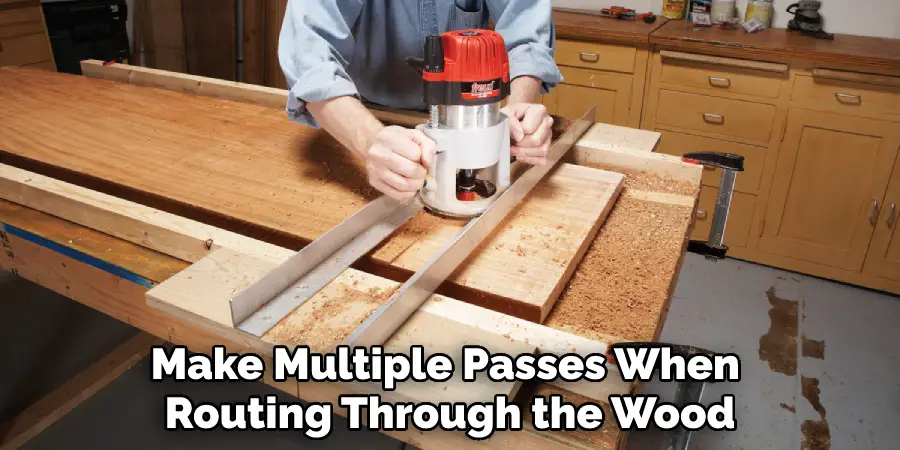
For more intricate routing designs, you can use a V-groove router bit. This type of router bit has a special shape that creates a “V” groove in wood as it is routed along its surface. The V-groove provides an attractive look and gorgeous detail to your lettering when done correctly.
8 Methods How to Router Letters in Wood
1. Trace the Letter onto the Wood
The first step is to trace the letter onto the wood. You can use a pencil or a pen to do this. If you’re using a pencil, make sure that the lead is sharp so that the lines are clear. If you’re using a pen, make sure that it’s an ink pen so that the lines won’t rub off.
Make sure to trace the letter as accurately as possible so that it will look neat and professional when you’re done. If you make a mistake, it’s best to start over with a new piece of wood.
2. Cut Out the Letter
Once you’ve traced the letter onto the wood, use a saw to cut out the letter. If you don’t have a saw, you can use a knife or a pair of scissors. Just be careful not to cut yourself. Make sure that you take your time and cut as close to the outline as possible so that the letter looks clean and professional when it is finished.
To make the letter stand out, use a router to define the edges of the letter. This will create a raised edge that stands out from the flat surface of the wood. With a router, you can also create different depths and shapes for the letter. This will help to create a unique look that is sure to impress.
3. Smooth Out the Edges
Once you’ve cut out the letter, use sandpaper to smooth out any rough edges. This will make it easier for paint or stain to adhere to the wood and will also give the letter a more polished look.
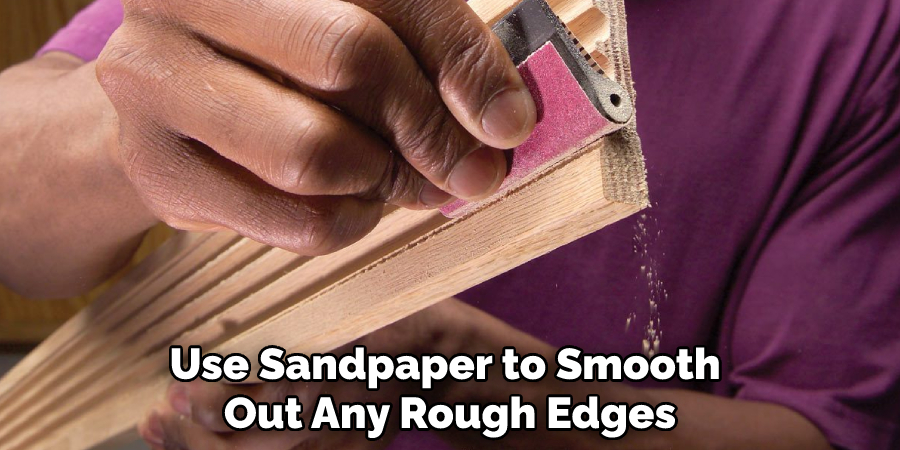
Be sure to follow the grain of the wood when sanding, as this will make it less likely that you will cause any damage. Use fine-grit sandpaper for the best results. If necessary, you can use finer grit to get the edges even smoother. Once finished, wipe down the letter with a damp cloth to remove any dust or debris.
4. Paint or Stain the Letter
Now it’s time to paint or stain the letter. If you’re painting, choose a color that contrasts well with the wood. If you’re staining, choose a color that compliments the wood grain. Apply the paint or stain evenly and allow it to dry completely before proceeding to the next step.
While you’re waiting for the paint or stain to dry, you can use this time to prepare your router bit. To ensure a high-quality result, make sure that your router bit is sharp and has been cleaned. This can be done by running a piece of sandpaper along the edges of the router bit.
5. Seal the Letter
After the paint or stain has dried, apply a sealant to protect it from wear and tear. You can use a clear sealant or a colored sealant, depending on your preference. Allow the sealant to dry completely before moving on to the next step.
If you’re using a colored sealant, be sure to apply two coats for the best results. While you’re waiting for the sealant to dry, take a break and stretch your legs! Though the process may seem tedious, taking breaks will help keep your focus and alertness up.
6. Attach Hangers (Optional)
If you want to hang your letter on a wall, add hangers to the back of it. You can use nails, screws, or adhesive hangers for this. Just make sure that whatever method you use is secure so that your letter doesn’t fall and break. After attaching the hangers, you can hang your letter up and show off your craftsmanship.
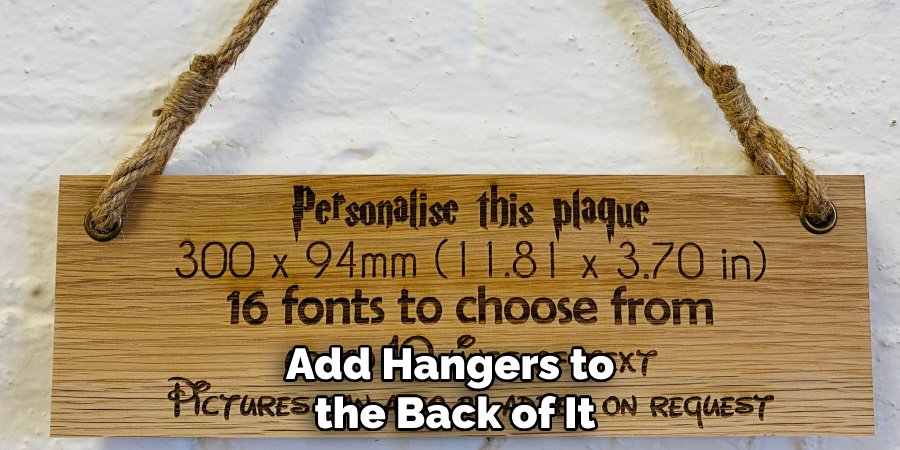
While it may seem like a small detail, adding hangers can make all the difference in your finished product. Try to choose hangers that complement the overall design of your letter. However, if you decide to skip the hangers and just place your letter on a shelf or table, that’s perfectly fine too.
7. Add Decorations (Optional)
If you want, you can add decorations to your letters such as beads, sequins, or ribbon. This is entirely up to you and is not necessary for completing the project. Simply glue the decorations into place and you’re ready to go.
Too much decoration can make the project look cluttered, so be sure to use your best judgment. You can also stain or paint the wood for a different look, then sand the edges so they are smooth. However, if you are using soft woods such as pine or cedar, the router may not be able to make a deep enough cut.
8. Hang Your Letter on the Wall!
Once your letter is complete, find a spot on your wall to hang it up! You can use nails, screws, adhesive hangers, or even magnets to get the job done. Once it’s securely in place, stand back and admire your hard work!
Not only will you have a unique piece of wall art, but you also now know how to router letters in wood for any other projects that come up. However you decide to use your newfound skills, just remember that practice makes perfect!
What Wood Is Used for Letters?
When it comes to router lettering in wood, the type of wood used is important. Softwoods such as pine or cedar are best for a beginner because they are less likely to splinter and easier to work with. Harder woods such as oak, walnut, or mahogany can also be used but will require more skill and patience.
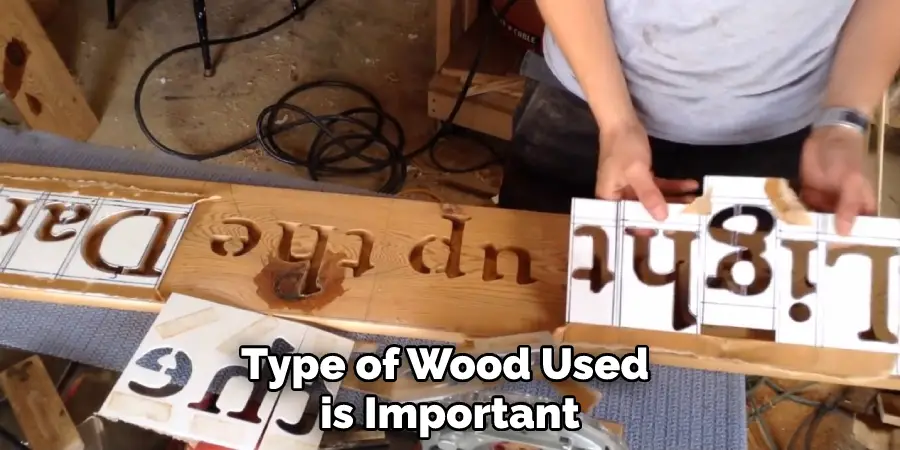
The wood should be free of knots, splits, or any other type of imperfection that could interfere with the router lettering process. Additionally, the grain pattern should be straight so it is easier to follow when routing out letters. As a general rule, choose a wood that is easy to work with and has an even grain pattern for the best results.
Conclusion
To summarize, routing letters in wood is a great way to personalize a variety of home décor pieces. If you have the right tools and some guidance, this project can be an engaging and rewarding experience. With practice and patience, anyone can become adept at router lettering.
So don’t wait any longer: grab some woodworking equipment and start creating beautiful works of art today! After following these steps for “How to Router Letters in Wood,” you should have all the information needed to take your woodworking hobby to new heights.

